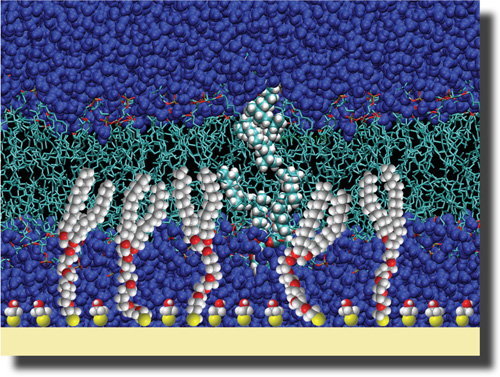Nano-sensors (nanoelectric-biological) hybrid mode for detection and quantification of species in biological systems (PhD nano-microelectronics)
Researcher and author: Dr. ( Afshin Rashid)
Important Note: A biosensor is the name of a group of sensors. These sensors are designed to react with only one specific substance. The result of this reaction is messages that a microprocessor can analyze.
These sensors are used to detect and quantify species in biological systems.
These sensors consist of three parts:
A (bioreceptor or bioreceptor: a biological element) are antibodies, nucleic acids, enzymes, cells, tissues, and other biological substances that can selectively react only with a particular substance.
B) Detector and converter: which acts after the reaction of certain substances with bioreceptors and can determine the type and amount of reaction by various physicochemical methods ) For example by examining electrochemical, optical, mass or thermal changes before and after React (and send appropriate signals to the processor.
(Signal processors: which are mainly responsible for displaying the results and performing sensor calculations. Biosensors have been considered by many research centers in recent years. Because biosensors are a powerful tool for identifying biological molecules, today they are used in various sciences. Medical, chemical, food industries, environmental monitoring, pharmaceuticals, health products, etc. The human sense of smell and taste, which detects different odors and tastes, or the immune system, which detects millions of different types of molecules . Examples of natural biosensors are the most widely used biosensors in medical diagnostics and laboratory science . Glucose biosensors are currently one of the most successful biosensors on the market for measuring blood glucose concentrations. Used in diabetic patients. Insufficient insulin is produced in the pancreas of diabetic patients. In such cases , regular blood glucose monitoring is necessary to regulate insulin intake . The sensors help patients with diabetes measure their blood glucose levels throughout the day and inject insulin when needed.
There are several applications for biosensors in medicine and clinical practice:
- Diagnosis and treatment of diseases (cancer, diabetes, etc.)
- Diagnosis of diseases at the gene level (cancer, diabetes, etc.)
- Diagnosis of pathogens
- Measuring drugs and their metabolites, discovering new drugs and evaluating their activity
- Evaluation and measurement of analytes in biological samples
Rapid diagnosis of diseases using rapid or care-of-point tests, the characteristic of these tests is the speed and cheapness of the test method.
Conclusion :
A biosensor is a group of sensors. These sensors are designed to react with only one specific substance. The result of this reaction is messages that a microprocessor can analyze.
Researcher and author: Dr. ( Afshin Rashid)
PhD in Nano-Microelectronics




